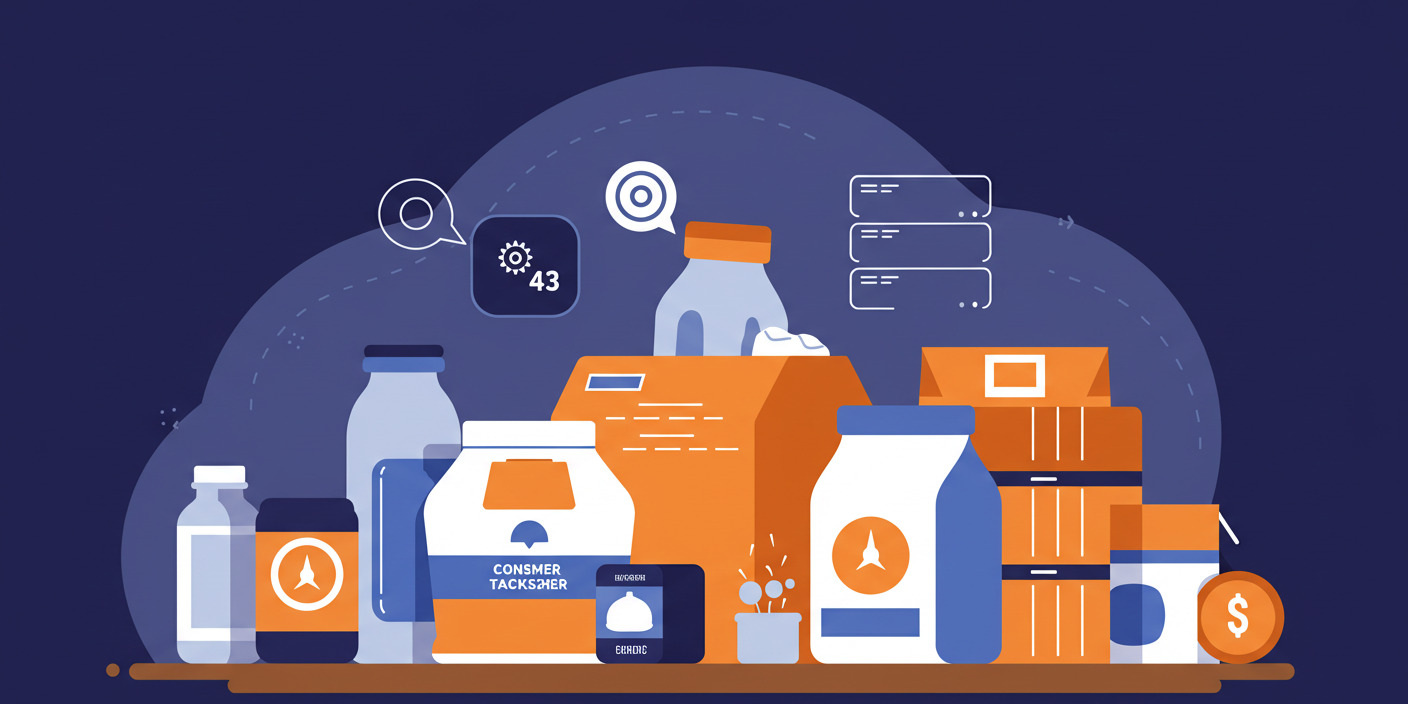
If you’re in the CPG world, you already know waste is a quiet killer. Unsold inventory, overproduction, expired goods, inefficient shipping — it’s all lost margin, lost opportunity, and growing pressure from investors and regulators.
Now that Environmental, Social, and Governance (ESG) goals are tied to capital access and public perception, the stakes are even higher. So how are the most forward-thinking CPG brands dealing with it? They’re using AI — not as a shiny toy, but as a practical, evolving toolkit to cut waste and fight shrinkage in ways that weren’t possible five years ago.
Let’s walk through what that looks like in the real world.
What Are Shrinkage and Waste in CPG, Exactly?
Quick refresher:
-
Shrinkage: Product that’s lost between production and sale. That could mean spoilage, theft, damage, or miscounts.
-
Waste: Anything produced that isn’t consumed — whether it expires on shelves, is over-ordered, or gets tossed during manufacturing.
Both have clear cost implications, but they also hit ESG goals head-on: carbon emissions from extra transport, water and energy wasted in production, materials thrown out instead of reused.
AI can help CPG companies get ahead of this, but only if it’s integrated in the right places.
Where AI Is Making the Most Impact Today
1. Predicting Demand More Accurately
The biggest driver of waste in CPG? Bad forecasts. You make too much or too little and either way, something gets lost.
AI helps fix this by looking at more than just past sales. With machine learning, brands can build models that factor in weather, promotions, competitor pricing, social media trends, and even local events.
Real-world example:
-
A mid-sized snack company reduced excess inventory by 18% after switching from spreadsheet-based forecasting to an AI model that adjusted demand predictions daily across 6 regions.
2. Spotting Anomalies in the Supply Chain
Most waste doesn’t happen in one big splash — it leaks out in small, unnoticed ways. A slightly miscalibrated machine. A distributor who consistently breaks pallets. A warehouse that’s overcooling its storage.
AI doesn’t sleep. It monitors operational data in real-time and flags deviations before they turn into systemic issues.
What to look for:
-
Computer vision that flags faulty packaging before it ships
-
Sensors feeding into AI systems to detect temperature, humidity, and spoilage risks in transit
-
Pattern detection in loss data to isolate root causes of shrinkage
3. Optimizing Production Runs and Batch Sizes
Running smaller, more flexible batches isn’t new. What’s new is having the data and models to do it confidently without compromising margins.
AI can help:
-
Simulate batch outcomes before they run
-
Adjust batch sizes based on real-time sales velocity
-
Identify overproduction risk by SKU, region, or season
This is where AI feels less like a tool and more like a co-pilot.
Tying It All Back to ESG
Let’s not forget why this matters beyond dollars and cents. ESG isn’t just a reporting framework — it’s becoming a lens through which investors, consumers, and regulators evaluate business value.
Here’s how AI supports ESG across all three pillars:
Environmental
-
Lower emissions through optimized logistics
-
Reduced landfill waste from spoilage
-
Smarter resource use (energy, water, materials)
Social
-
Better working conditions when operations run smoothly (less pressure on teams, fewer late-night fixes)
-
Safer products through consistent quality control
Governance
-
Transparent, traceable data on operations
-
Better reporting for sustainability disclosures
-
Fewer compliance headaches around product loss or mislabeling
In short, AI makes ESG practical. It gives teams the visibility and control they need to hit targets without guessing or overcompensating.
What It Takes to Get Started
AI doesn’t have to be a massive transformation project. You don’t need a fleet of data scientists or a seven-figure budget. But you do need a few key ingredients.
1. Clean, Accessible Data
AI can’t optimize what it can’t see. Start by auditing your data sources — production systems, ERP, logistics platforms, shelf-level sales.
2. A Clear Problem to Solve
Don’t start with “Let’s use AI.” Start with “We keep overproducing product X in region Y.” The more specific the challenge, the faster AI shows its value.
3. Cross-Functional Buy-In
Operations, sustainability, finance — they all need to be in the room. AI changes workflows, and that only works if people are part of the process, not just handed the output.
Final Thought: This Is Just the Beginning
You don’t need to have it all figured out on day one. Early adopters move not because they have the perfect system — but because they’re willing to test, learn, and iterate.
AI is giving CPG brands a second chance to align profitability with sustainability. Waste doesn’t have to be a cost of doing business anymore. Shrinkage isn’t a mystery. The data is there — and now, so are the tools.
The companies that act on this first? They’re going to be the ones setting the ESG standard for everyone else.